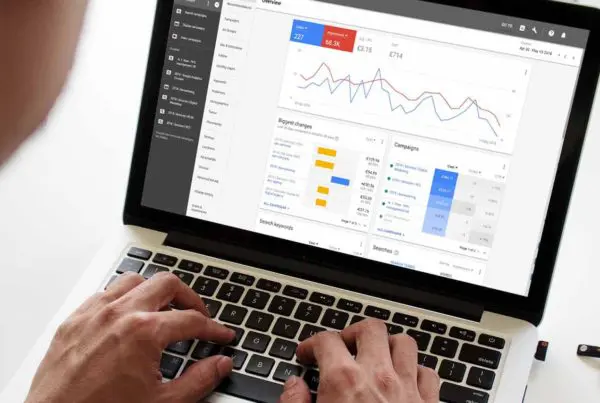As a Google Ads agency, we understand the importance of accurate tracking in maximising the performance of advertising campaigns. However you don’t want to bolster your results with false conversions from double-tracking.
Double-tracking conversions can lead to incorrect data, resulting in misguided decisions by marketers and algorithms. And ultimately, dissatisfied and angry clients. Definitely not our cup of tea!
Conversion Tracking – The Basics
Conversion tracking in Google Ads is a powerful tool that enables businesses like yours to track and analyse the performance of your advertising campaigns. By setting up conversion tracking, you can track specific actions that users take on your website, such as filling out a lead form or signing up for a newsletter.
There are several ways to set up conversion tracking in Google Ads. One way is to add a conversion tracking tag (Google Ads Tag – Gtag) to your website’s code. This tag tracks user actions and sends data to the Google Ads account, enabling you to track and optimise your campaigns based on performance data.
Another way to track conversions is to import them from other platforms, such as a customer relationship management (CRM) tool. This method enables businesses to track leads generated from sources outside of the website, such as phone calls or emails, and attribute them to specific ad campaigns.
Lastly, phone call tracking allows you to track phone calls generated from your ads. By using a unique tracking number, you can determine which ads generate the most calls and then make the relevant changes and updates to your account to make the most of this data.
The Problem of Double-Tracking
Double-tracking in Google Ads occurs when the same conversion is tracked twice, resulting in inaccurate data and misguided decisions. Recently, while working with a client, I discovered a common problem where the normal Google ads tag (Gtag) was tracking more conversions than the Gtag from Conversion Booster for Google Ads. This led to confusion, but on closer inspection, I found that double tracking was the problem!
The main cause of double-tracking is often due to two reasons:
- User lands on a thank you page and refreshes the browser later When a user lands on a thank you page, the Gtag fires with a conversion and value, which Google records as the first conversion. If the user keeps the tab open and refreshes the browser later, Google records the same conversion and value a second time.
- User receives an order confirmation email with a link to “check order status” that sends them back to the thank you page Google records a conversion when the user first lands on the thank you page. If the user receives an order confirmation email with a link to “check order status” that sends them back to the thank you page, the Gtag fires for the second time with the same value.
In both cases, Google believes the user has made two conversions with the same value, resulting in misguided decisions based on inaccurate performance data.
How to Prevent Double-Tracking
To prevent double-tracking, follow these steps:
- Access the “old” conversion action view Go to Google Ads, then navigate to Tools & Settings > Measurement > Conversions. Click on “View all conversion actions” in the top right corner to access the “old” conversion action view.
- Check for a high repeat rate In the “old” conversion action view, you will see a view of all conversion actions and their repeat rate. A high repeat rate in comparison with other Conversion actions for the same event indicates that some conversions are being tracked twice.
- Compare with the tracking in Google Analytics You can also compare with the tracking in Google Analytics for a given period. Google Ads tracking often shows higher numbers, but if it appears significantly higher compared to the total conversions during that period, there’s likely a problem.
- Add a TransactionID to all conversions To prevent double-tracking in Google Ads, Google offers a function to add a TransactionID to all conversions. If Google receives a conversion with the same TransactionID twice, it will only count the first one. This is the approach used by Conversion Booster for Google Ads. It is essential to include the TransactionID in the Gtag to prevent double-tracking, ensure accurate performance data, and avoid wasting ad spend.
Conclusion
In conclusion, double-tracking in Google Ads can lead to misguided decisions based on inaccurate data. Always check for double-tracking and include the TransactionID in your Gtag to report accurate data and make informed decisions based on the correct performance of your campaigns.
By following these steps, you can avoid misguided decisions based on inaccurate data and ensure that your advertising campaigns perform to their full potential.
Unlock the Power of Google Ads with the Help of an Experienced Google Ads Agency
Are you worried about the conversion tracking of your Google Ad campaigns? Is your current Google Ads agency not supporting you in this area?
As a Google Ads agency in Southampton, Hampshire, we are positioned perfectly to help business owners, MDs and sales/marketing managers with their Google Ads. Get started today with our free Google Ads Growth Review!
- How to Do Keyword Research for Google Ads - January 15, 2024
- A Comprehensive Guide to Google Ads for B2C Businesses - January 8, 2024
- How to Write Calls to Action (CTAs) for Google Ads - December 25, 2023






